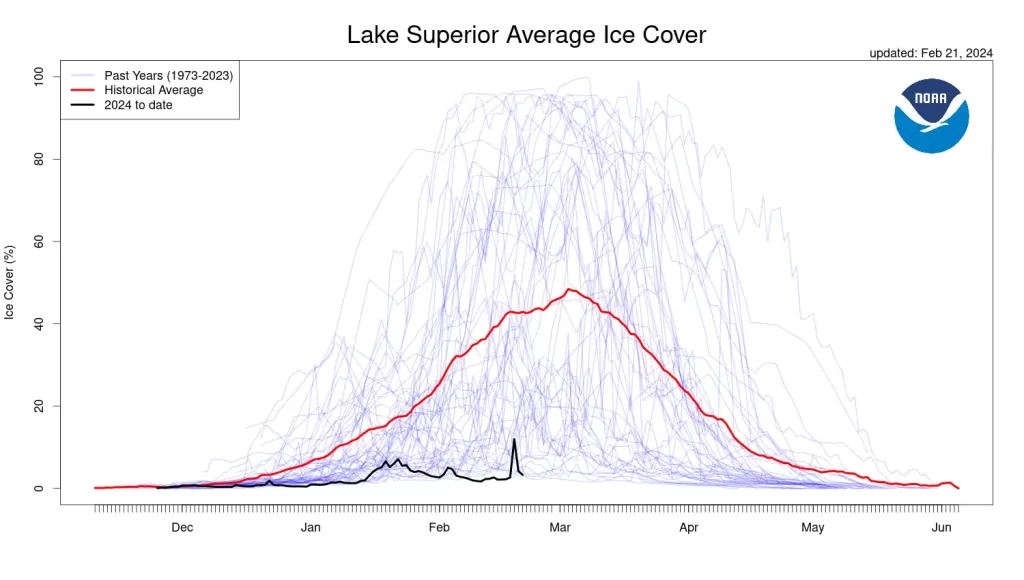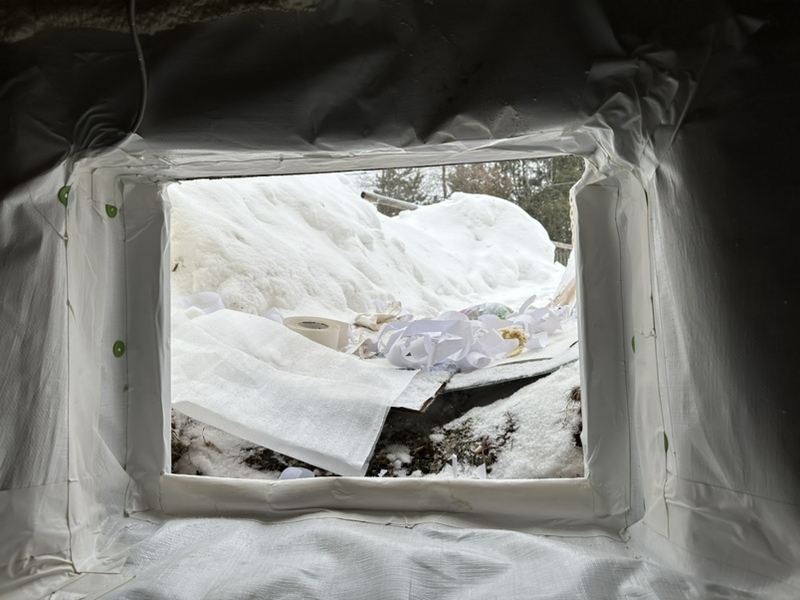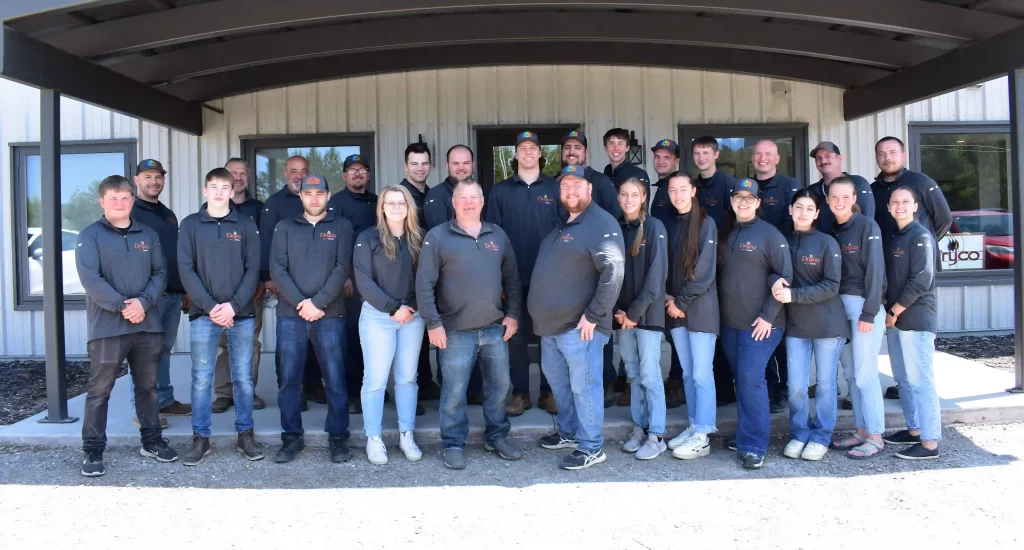
Weather You Like it or Not
Adapting to the unseasonably warm “winter” weather in Duluth, MN
With new records being broken, seemingly every week, this strange winter has caused many of Duluth’s norms to fly out the window.
The lack of snow, sub-zero temperatures, and ice coverage have been seen as either a blessing or a curse depending on who you ask, but one thing remains true: these changes in weather require a change in behavior.

Image courtesy of MPR News/Where’s the ice? Historic low Superior and Great Lakes ice cover
Accounting for Fluctuating Temperatures and Humidity Within your Crawl Space:
Before the cold winter temperatures take effect, it is common practice to seal off areas of your property that are subject to greater influence from the outside environment. Namely, crawl spaces. In order to preserve the efficiency of your property, it is easier to block-off or seal the air from a cold, drafty crawl space, rather than paying to heat it.
The issue with sealing off this space comes in the Spring, when outside temperatures can rise and fall, abruptly. As temperatures rise, the humidity within your crawl space increases. When they subsequently drop, the moisture condensates and creates an environment more susceptible to mold growth.
Because warmer temperatures have been a common occurrence throughout January and February in 2024, there is a greater risk for high humidity air being trapped within your crawl space, and condensating during cold days or stretches.

Image courtesy of Dryco Restoration Services
In any given year, this problem is bound to occur, as all Winters/Springs have a time period where temperatures fluctuate from above to below freezing. However, this transitory stage has arrived earlier than normal, leading to a greater frequency of temperature shifts. Because of this, there are more opportunities for humidity build-up and condensation. De-winterizing your crawl space earlier than normal can present its own challenges as you become more susceptible to adverse cold-weather effects if temperatures dip below freezing, or worse, below zero.
While there is no way to be sure what the coming months will bring, we strongly recommend that those with crawl spaces monitor their humidity, consistently. A lack of snow does not guarantee a damage-free home.
Ground Saturation and Runoff:
When the ground reaches its saturation point (this varies based on the type of soil present), excess water or moisture can no longer penetrate the earth. Because the flow of liquid will always be dictated by gravity and the path of least resistance, water will begin to move downwards, and/or pool in low points. Unfortunately, this means that water will likely move towards your property, and eventually make its way into or below your foundation.
While most properties have a drainage system in place to mitigate or redirect water runoff, high and continuous volume can easily overwhelm sump pumps, drain tile, and of-course, no system at all.
How can you predict the amount of water your property will take on come spring time? Below are the two opposite ends of the spectrum for water runoff probability.

Image courtesy of Edina Real Estate/Prevent Flooding Damage
Best Case Scenario:
Early snowfall in October-November insulates the ground before deep, seasonal freezing can occur. The ground stays unfrozen throughout the winter, or only a thin layer of frost forms due to consistent snow cover.
Come spring time, a steady increase in temperature allows snow to melt and be absorbed into the unfrozen ground, little by little.
Worst Case Scenario:
A lack of snow in the early winter months allows frost to penetrate the ground quickly. With extremely cold temperatures and little snow, frost works its way deeper and deeper.
Come spring time, a rapid increase in temperature melts aggregate snowfall, quickly. Coupled with the chance of additional precipitation, the frozen ground is unable to absorb the excess water, so it travels along the surface. With nowhere else to go, water inevitably makes its way into your property.
So where do we stand?
Currently, we’re somewhere in the middle, but leaning far closer to the best case scenario. With little to no snow cover, and ample surface thaw, any additional precipitation or moisture should be readily absorbed into the ground.
With that being said, there is always time for things to change, and for precipitation to overload the thawed ground’s moisture capacity.
One way to gain insight into the future levels of water runoff is through the frost readings taken by the University of Minnesota’s Southwest Research and Outreach center in Lamberton, MN.
Their most up-to-date readings can be found below:
Feb 5th 2024 – Frost depth under bare ground, 20” with 5” of surface thaw / frost depth under sod 0”
Feb 12th 2024 – Frost depth under bare ground, 19” with 10” of surface thaw / frost depth under sod 0”
Compare that to years past:
Feb 6th 2023 – Frost depth under bare ground, 24” / frost depth under sod, 0”
Feb 13th 2023 – Frost depth under bare ground, 26” / frost depth under sod, 0”
Feb 7th 2022 – Frost depth under bare ground, 33” / frost depth under sod, 13”
Feb 14th 2022 – Frost depth under bare ground, 34” / frost depth under sod, 14”
In 2023, after a year of record snowfall, the relatively low levels of frost were not enough to offset the onslaught of water. Things are looking up for property owners in 2024, but the chance for melting water to overwhelm your drainage system is never zero. As far as how this impacts your behavior: any precautions you normally take to prepare for the snow melt should be done far sooner than normal. Inspect sump pumps, gutters, and drainage areas to ensure proper functionality before they are tested by nature.
As it stands, a warmer winter has provided those in the Duluth area with many benefits, and a few new challenges. Before Spring has officially arrived, stay diligent in your home’s upkeep by monitoring humidity levels in crawl spaces, as well as testing all drainage systems. If one thing is for certain, Duluth’s weather behaves unpredictably.
Minimize your chance of experiencing property damage by understanding what changes need to be made within your home or business to account for the abnormal weather.

Dryco Restoration Services is a locally owned and operated restoration company that specializes in mold removal throughout the Northland. Located in Duluth, MN, our team is has helped hundreds of home and business owners who have experienced mold damage from long-standing moisture issues and sudden water damage.
Dryco is certified in all aspects of mold remediation, and is able to assist in mold removal throughout attics, basements, crawlspaces, and anywhere mold may be discovered.